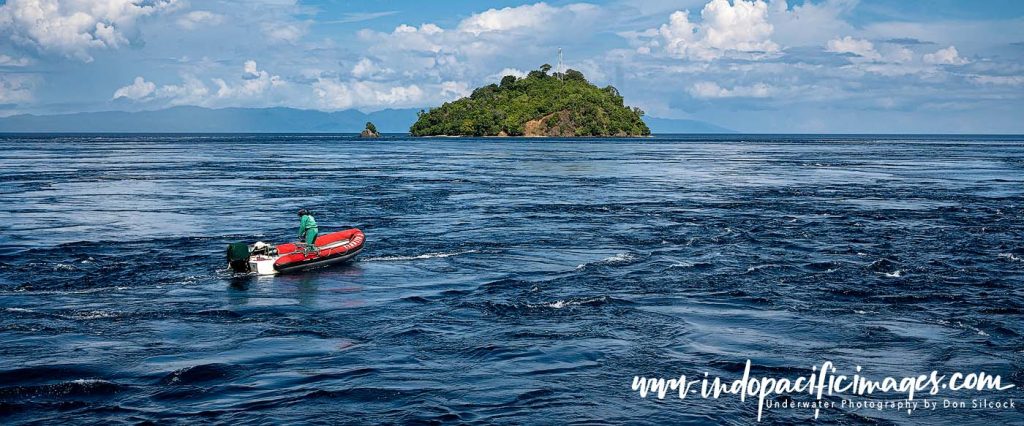
The Indonesian Throughflow is, simple stated, the largest movement of water on the planet. And is the key to understanding the marine biodiversity of the Indonesian archipelago and the Coral Triangle.
The Throughflow is an incredibly powerful force of nature. With so much water flowing that a special measurement had to be developed to actually quantify it – the “Sverdrup”!
Excellent descriptions of both Sverdrups and the Indonesian Throughflow can be found in David Pickell’s book Diving Bali,
But the basic mechanism is the difference in sea-level between the Pacific Ocean to the north-east of the archipelago and the Indian Ocean to the south-west.
That massive disparity is caused by the trade winds and associated oceanic currents. Which act in opposite directions in the northern and southern hemispheres. But the overall result is the largest movement of water on the planet flowing through the Indonesian archipelago.
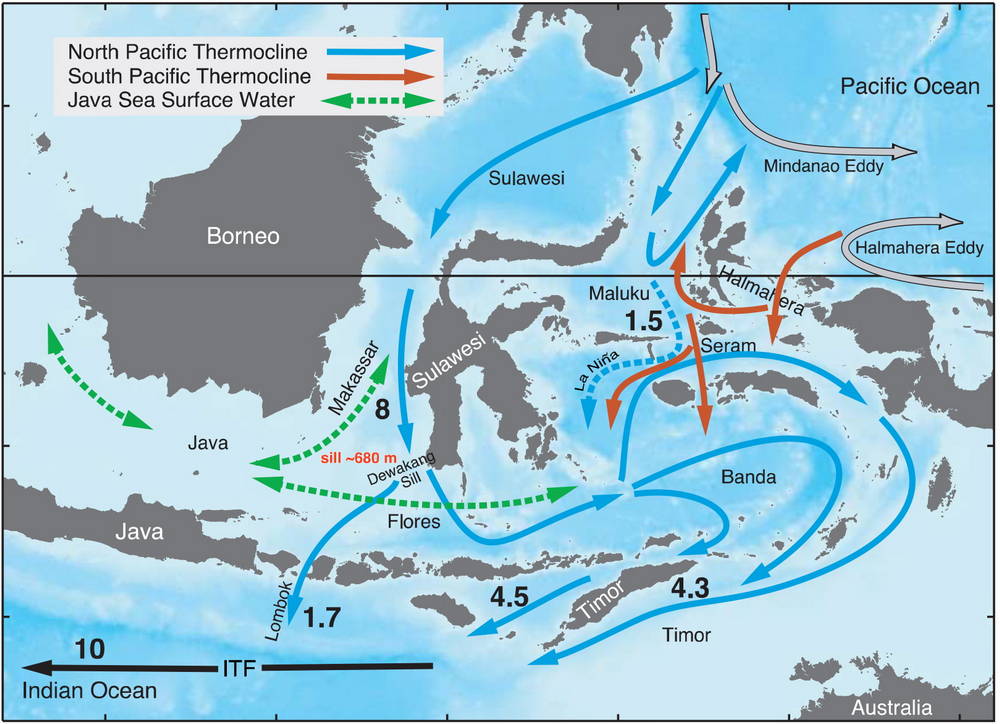
The 17,000+ islands of the archipelago act as a kind of hydraulic brake on the Indonesian Throughflow. And it is said that if Indonesia did not exist, there would only be 23 hours in each day. Because that hydraulic brake effectively slows down the rotation of the Earth!
The Indonesian Throughflow and “Sverdrups”
So huge is the volume of water associated with the Indonesian Throughflow that traditional measurements are inadequate. Cubic meters and gallons are simply too small to describe it in an easily understandable way. And so the Norwegian scientist Harald Sverdrup invented the Sverdrup – one million cubic meters of water per second.
David Pickell visualizes it best… Think of a river 100m wide, 10m deep and flowing at 2 knots. Then imagine 1,000 of those rivers all combined together. That is one Sverdrup!
It is estimated that the total amount of seawater that passes through the Indonesian Throughflow is 15 Sverdrups. Or 15,000 of those rivers… A massive volume of water which has to make its way through the the Lesser Sundas. The chain of islands that runs along the bottom part of the Indonesian archipelago.
Scott Pearse Indonesian Throughflow Animation
Scott Pearse, a software engineer at the National Center for Atmospheric Research (NCAR) has created and posted a really nice animation that shows the Indonesian Throughflow as it flows through the archipelago, You can use this link to access on YouTube or just click on the image below:

The Main Exit Points – Big Currents!
There are a limited number of channels between the islands of the Lesser Sundas.
The main ones, which carry the majority of the water flow, are the Lombok Strait between Bali and Lombok.
Plus the Sape Strait between Sumbawa and Komodo and the Ombai Strait between Alor and Timor.
Of those three, the 35km wide Lombok Strait offers the largest and most direct path for the waters of the Throughflow to enter the Indian Ocean.
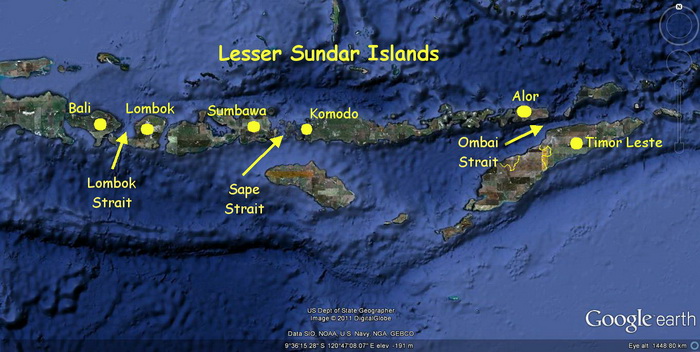
And it is estimated that about 20% of the shallow water flow of the Indonesian Throughflow passes through that conduit. Which in terms of rivers means 3,000 of them…
Biodiversity and the Indonesian Throughflow
When the creatures in our oceans die, they sink to the bottom. Where they decompose and become part of the dense layer of detritus on the seabed. Rich in nitrogen and phosphorous nutrients that detritus feeds the bottom dwelling (bethnic) creatures. But in the western Pacific Ocean, to the north of the Indonesian archipelago something quite profound happens.
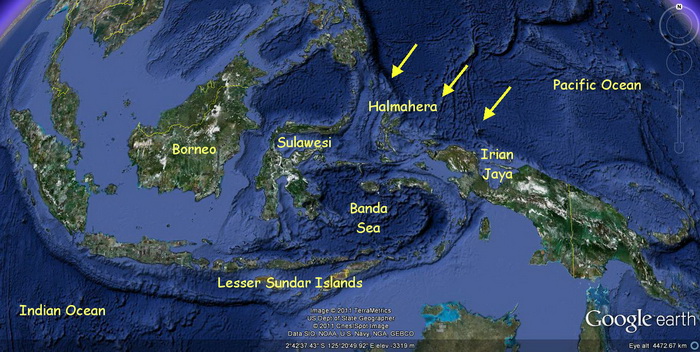
As the waters of the Throughflow approach the shallower land mass of the Indonesian acrchipelgo, upwellings are created.
Those upwellings suck up nutrients from the depths and thus does life in the ocean come full circle.
As the nutrient rich remains of those dead organisms are delivered to the living ones hungry for sustenance.
Then, as the waters of the Throughflow head south through the archipelago.
The eggs and larvae of those reefs and ecosystems are transported and distributed through the archipelago. It’s basically a perfectly evolved supply chain that is brought to us by nature!
Alfred Russell Wallace and the Indonesian Throughflow
Alfred Russell Wallace was a British naturalist who explored the “Malay Archipelago” (Indonesia as we now know it…) in the 1850’s. In all he spent 8 years classifying both the flora and fauna together with the people of the archipelago.
The results of which he subsequently documented in a book of the same title that was first published in 1869. The Malay Archipelago is still in print to this day. And it provides a remarkable insight into the man himself and the areas he explored in more than 60 separate journeys.
Wallace traveled over 14,000 miles and collected a total of 125,660 specimens of natural history. Much of which he bequeathed to British Museums. The time spent and the distance traveled, combined with the vast specimen collection, led Wallace to a very clear conclusion.
Just as the island of Madagascar had distinct species because of the deep water channel that separates it from Africa. There were striking differences between the flora and fauna in the eastern and western parts of the archipelago.
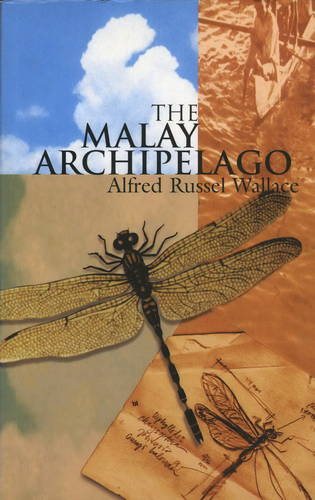
The Wallace Line
Wallace postulated that an imaginary line could be drawn roughly north to south through the Malay Archipelago. To the west of that line the flora and fauna clearly belonged to what he called Indo-Malayan division. While everything to the east belonged to the Austro-Malayan division.
This led to the conclusion that the land masses to the west had once been part of the Asian continent. While those to the east were once part of a much larger Australian continent. That imaginary line became known as the Wallace Line. Which is often referred to as the most profound zoological barrier on the plant…
But the basic mechanism that creates the incredible barrier is the Indonesian Throughflow. Something that Wallace would have had no idea of at the time!

